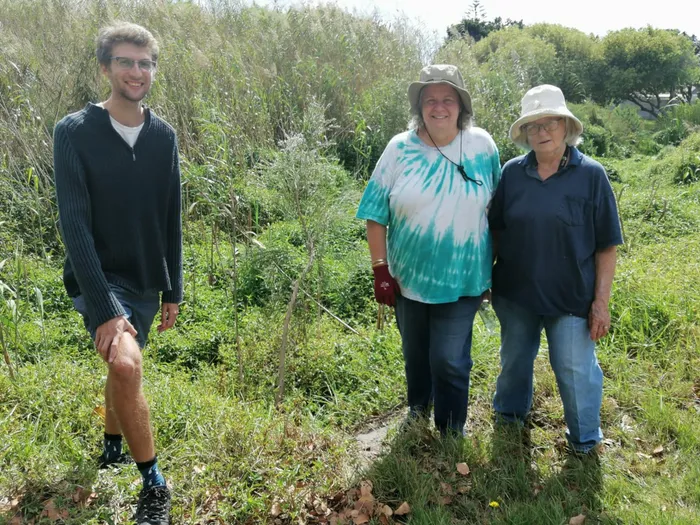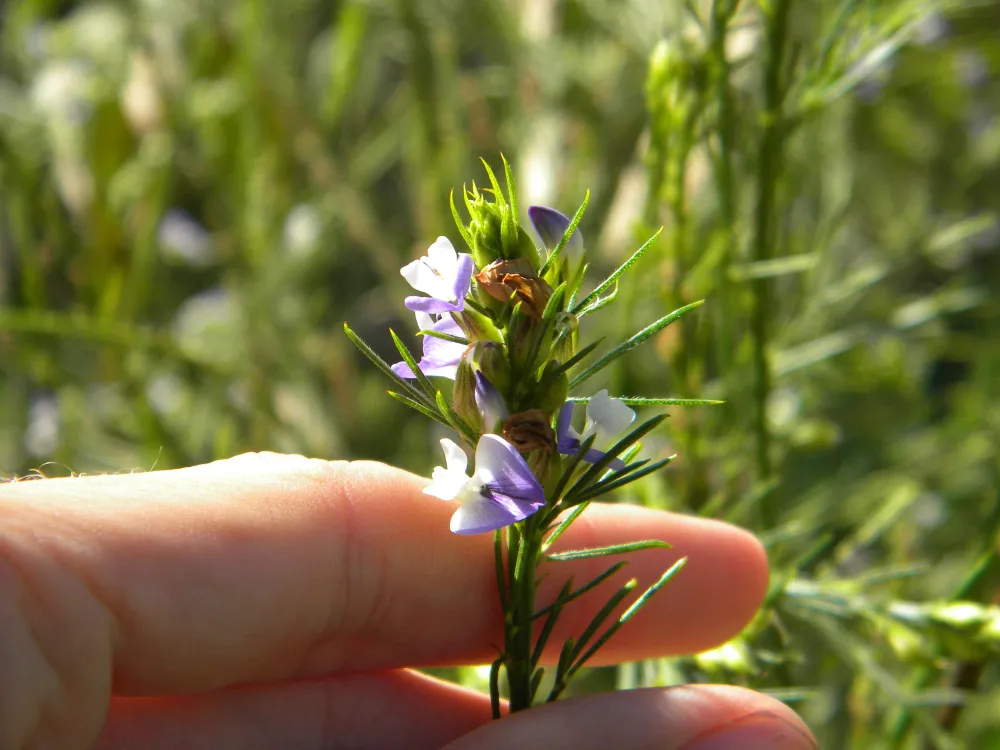Amateur botanist uncovers rare plant species

Friends of Kirstenhof Wetland members, from left, Tim Kirsten, Louise Kinrade and Jean Fillis.
A plant, possibly only last seen many decades ago in Cape Town, has been identified in the Kirstenhof greenbelt.
The plant, found and photographed by amateur botanist and Friends of Kirstenhof Wetland member Tim Kirsten, was identified as the longleaf fountain bush (Psoralea filifolia) on Wednesday March 23.
However, concern has been raised about the wholesale clearing of the river vegetation in the greenbelt near Oranje Road in Kirstenhof where the plant was found.
Psoralea filifolia is in flower between November and March and grows along riverbanks and seepages.
Mr Kirsten, who has lived in Kirstenhof all his life and walks the local greenbelts most days, first noticed the plant in 2020 and took photos of it in flower in November 2021.
It was originally misidentified as Psoralea pinnata on the iNaturalist app.
Last month, he took better photos that were positively identified on iNaturalist by professors Charles Stirton and Tony Rebelo.
On Thursday March 31, researchers working for the SA National Biodiversity Institute (SANBI) and Custodians of Rare and Endangered Wildflowers (CREW) - a citizen-science initiative that involves members of the public in the surveying, monitoring and conservation of plants - collected a small cutting for the Compton Herbarium at Kirstenbosch and for Sanbi and UCT. Professor Muthama Muasya, of UCT’s department of biological sciences, performed the molecular/genetic analysis on the plant.
Professor Stirton said Psoralea filifolia was thought to be locally extinct on the greater Cape Flats. “The last time this species was officially recorded on the Cape Flats, including Kirstenhof, was in the 1830s, despite botanists having searched extensively for it since. There are still small populations elsewhere in the Western Cape, but these are also threatened as the species is confined to riverbanks and seepages.”
Louise Kinrade, who has the “green” portfolio on the Kirstenhof and Environs Ratepayers’ Association, fears that the Psoraleas are at risk of being pulled out and sent to the compost dump by the City’s alien invasive removal team, which, along with a contractor, is working in sections of the Keyser and Westlake rivers clearing aliens and typha reeds as part of the annual winter preparedness and anti-flooding programme.
“Last year, we had contractors further downstream in the reed bed supposedly only removing bramble and Madeira vine and who, for whatever reason, hacked our indigenous Salix willow and left the Australian cherry standing right next to it intact,” she said.
However, ward councillor Carolynne Franklin said she had made sure that the clearing teams had been “sensitised to the necessity of retaining the indigenous plants alongside the banks”.
Mr Kirsten said he was very excited about the find. “How amazing that this species could have survived in the seed bank for decades or as seedlings that no one who knew them well enough to identify managed to see. And that my hobby of taking photos and recording biodiversity on the greenbelt might lead to conservation action for an endangered species,” he said.
